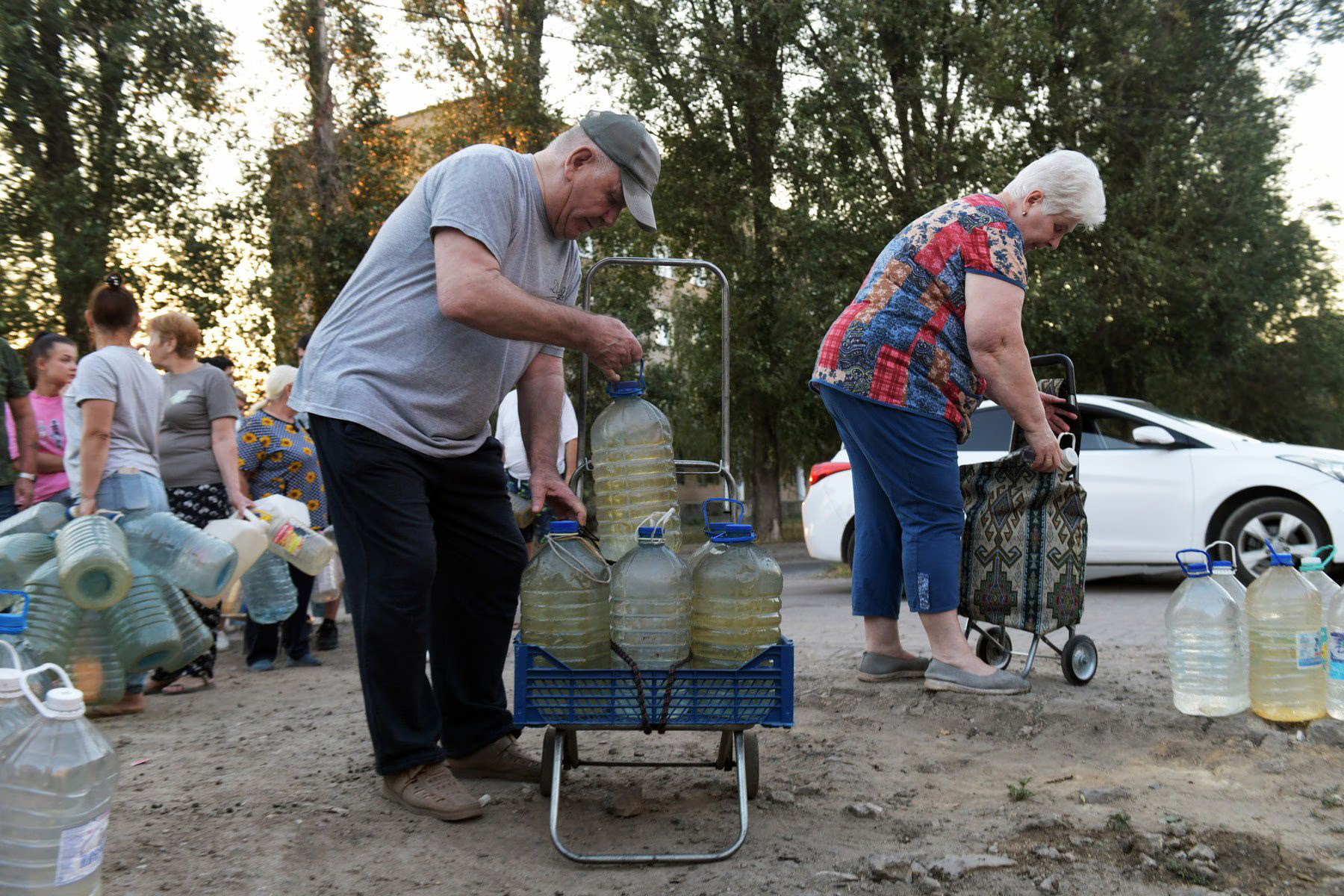The annexation of Crimea in 2014 and the war in Donbas launched by Russia deprived the region of a stable water supply. By the time of the full-scale invasion, the worn-out infrastructure supplying water to the so-called DPR was on the verge of collapse. Strikes in 2022 destroyed what remained of the network and damaged the dam through which water had reached the annexed territory.
To offset the loss, Russia’s Ministry of Defence built the Don–Donbas water pipeline, but by the summer of 2025 it was already failing under the strain. The shortage became so acute that residents addressed an open letter to Vladimir Putin, calling the situation a “humanitarian and environmental catastrophe.” Here is how the region is struggling to survive amid dehydration.
Donetsk, September 2025. A car stops outside a kindergarten. A passenger films on her phone as two men behind the fence fill jerrycans from a one-tonne tank installed for the children. An elderly woman stands nearby. “You’ve all lost your decency over this water,” the passenger scolds. “And when will it come?—the woman replies—there’ll be war over it. People will kill for it.” “The war has been going on for eleven years already,” another woman retorts. The video surfaced online, sparking another argument in local Telegram channels: some condemned the theft, others criticised the woman filming, while still others blamed the Russian-installed authorities for failing to provide water.
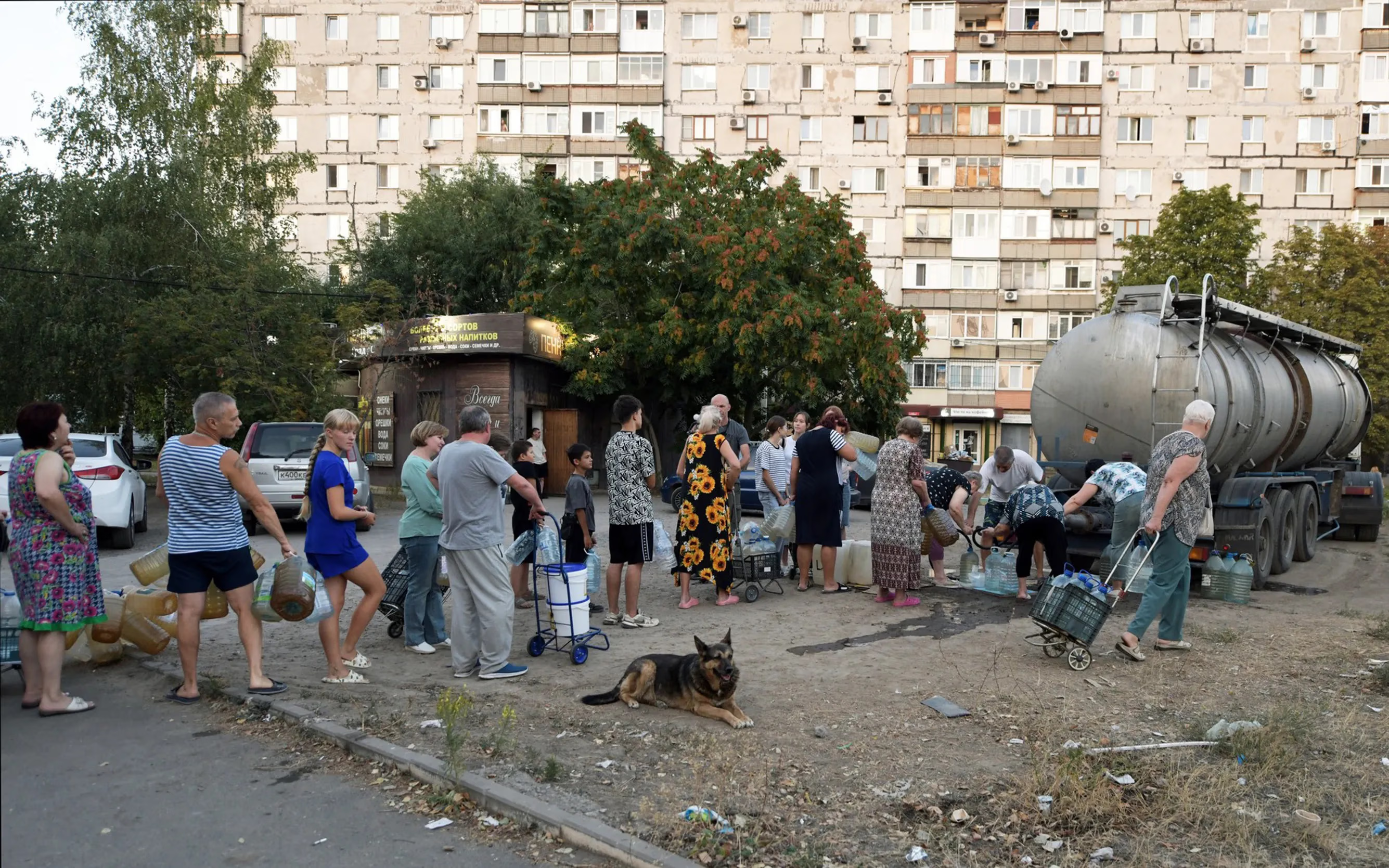

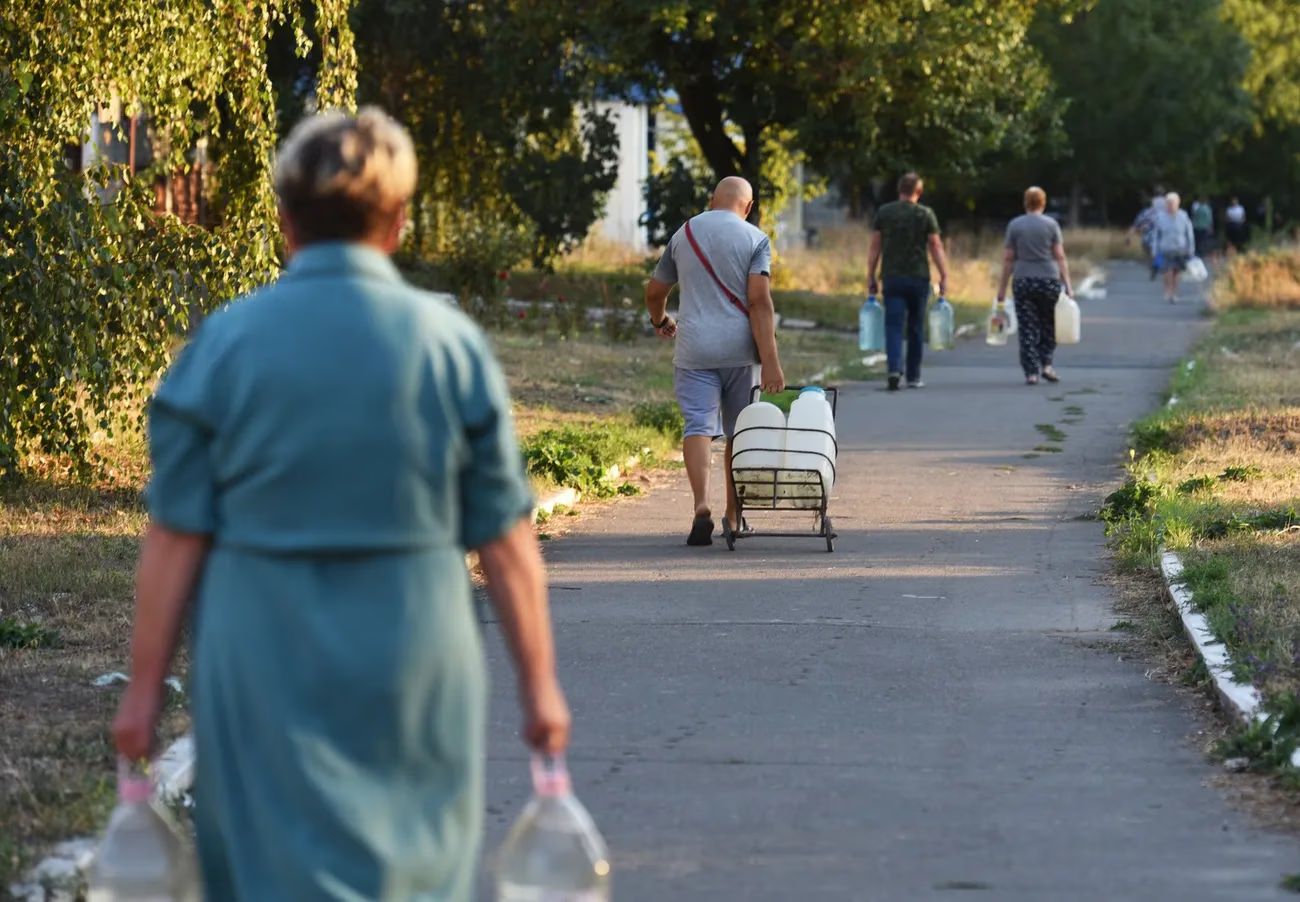
Donetsk has been under the control of the self-proclaimed Donetsk People’s Republic since 2014. In 2022 Russia formally annexed the entire region, though parts of Donetsk oblast remain under Kyiv’s control. Fighting continues only a few dozen kilometres from the city. August and September brought fresh strikes: Ukrainian forces attacked Donetsk and nearby towns, while Russian aircraft bombed the Kramatorsk district, killing dozens of civilians.
By the start of the full-scale war much of the region’s water system was dilapidated but still working. Now almost nothing remains. Since July 2025 water has been rationed on a schedule. “Once every three days from five to nine in the evening, but the timing is approximate—the pumping station might lose power or a pipe could burst,” says Igor, a Donetsk resident. The pressure is so weak that water often fails to reach above the fourth floor. Residents run pipes from basement taps and carry buckets up the stairs.
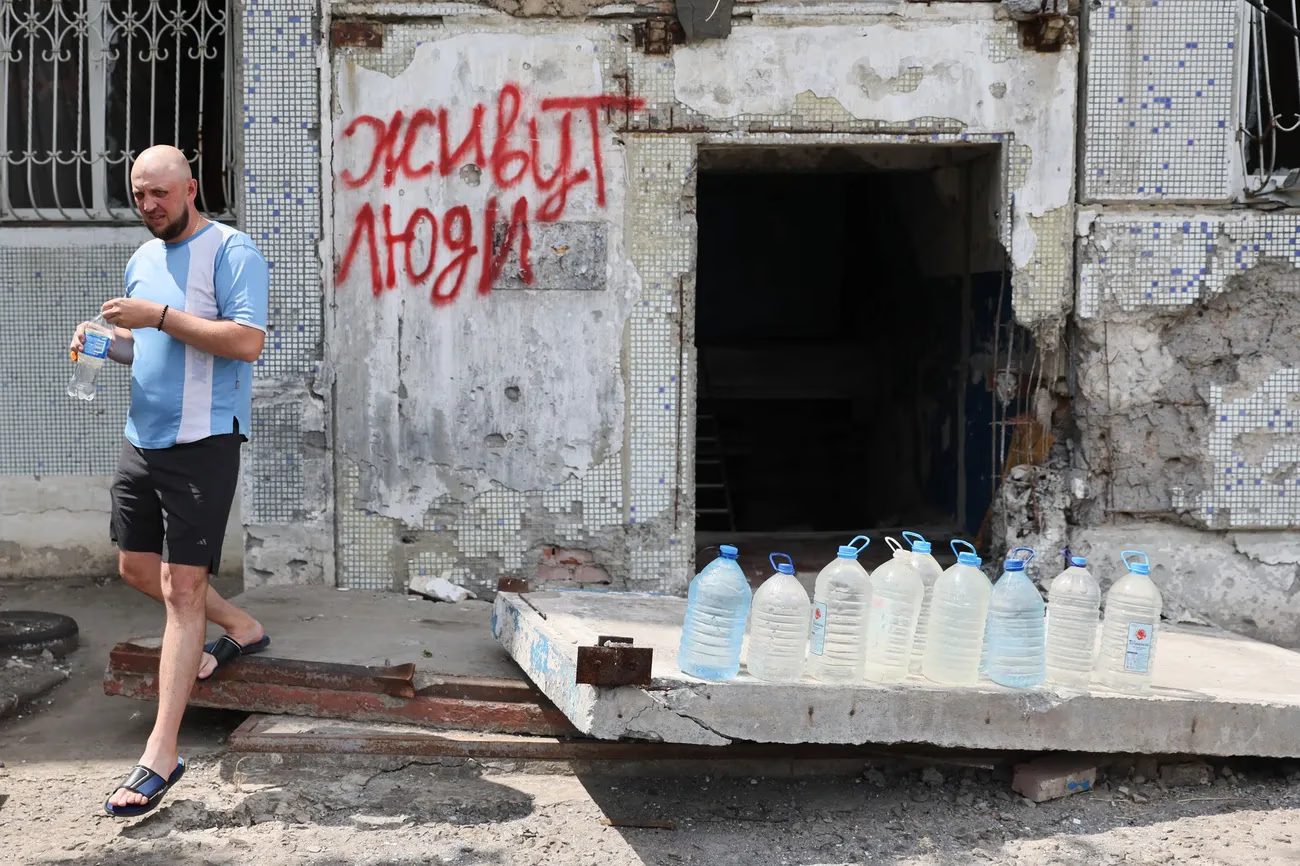
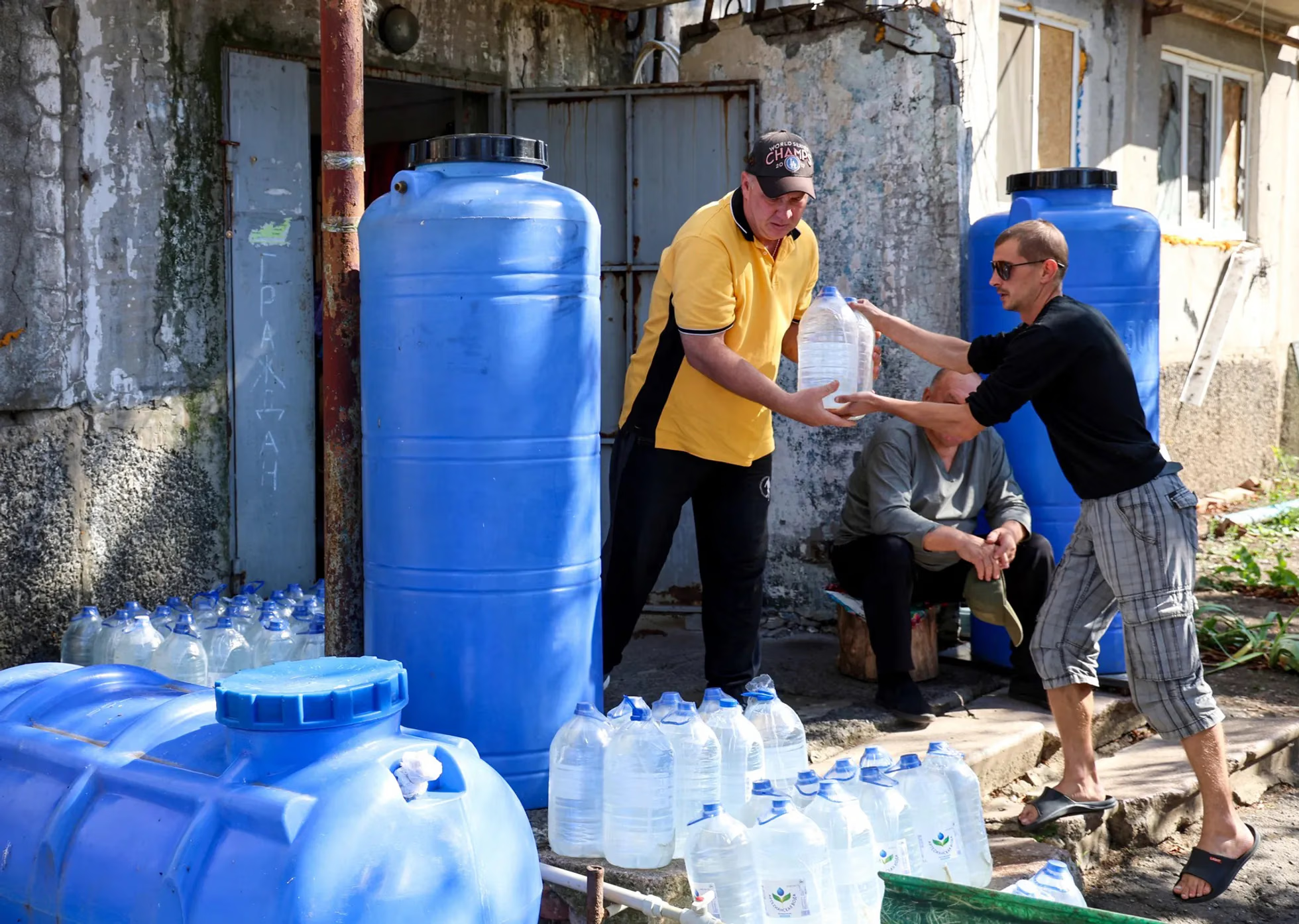
Russian-installed authorities have tried to ease the crisis with water trucks. But orders can be placed only during working hours, and many residents are unaware the option exists. Hospitals and schools have shut toilets, with staff collecting water for basic needs. “Doctors and teachers haul buckets themselves, if water is delivered at all,” says a local resident. In August business owners from Taganrog brought in 22 tonnes of water—enough for only a few days for four hospitals. Donetsk has nearly thirty.
Ordinary residents suffer the most. “Especially the elderly and those living alone—they physically cannot carry more than a couple of five-litre bottles,” says Anton, a Donetsk resident. Tap water, he notes, often runs reddish or bluish from impurities. In Mariupol—destroyed in the early months of the war—the situation is similar: water is cloudy and rusty, and the schedule is not observed. “People bathe in fountains and the sea, cook on open fires, just like during the 2022 blockade,” says Alexander, a local resident.
Drinking water is also scarce. In summer the price surged to five rubles per litre. After a strike on the Verkhnekalmius filtration station, the authorities imposed a price ceiling of 3.5 rubles, but this only pushed water off the market: sales by volume stopped, leaving only bottled water at twenty rubles per litre. “Private services used to deliver every four days. Now they say: orders are closed, call again in a few days,” Anton explains. People search for street pumps or turn to private well owners.
Moscow’s flagship project was the Don–Donbas water pipeline, launched in 2023. It draws water from the Don through the Rostov region. But its capacity is insufficient, and only a fraction reaches consumers because of leaks and breakdowns. Experts say that at best residents receive a third of the volume supplied. In the Rostov region the diversion itself has caused shortages, falling river levels and fish die-offs.

Repair work after a rupture on the Don–Donbas pipeline. February 11, 2025.
The networks themselves have also drawn criticism: decaying pipes, illegal connections, no preventive maintenance. “If 100% is supplied, only 25–35% gets through,” estimates Ukrainian expert Pavel Lisyansky.
In July residents recorded an appeal to Putin, calling the situation a humanitarian and environmental catastrophe. There was no reply. Later schoolchildren posted a video: “Water is such a simple thing, yet for us it’s a luxury. We are children, we should be running and laughing, not waiting for water deliveries.” That too went unanswered.
The Moscow-appointed head of the region, Denis Pushilin, admitted that the pipeline covers only half of the agglomeration’s needs. Losses reach 60%. By the end of the year the authorities promise to build another pipeline. But even Pushilin concedes that the regional budget lacks the necessary funds.
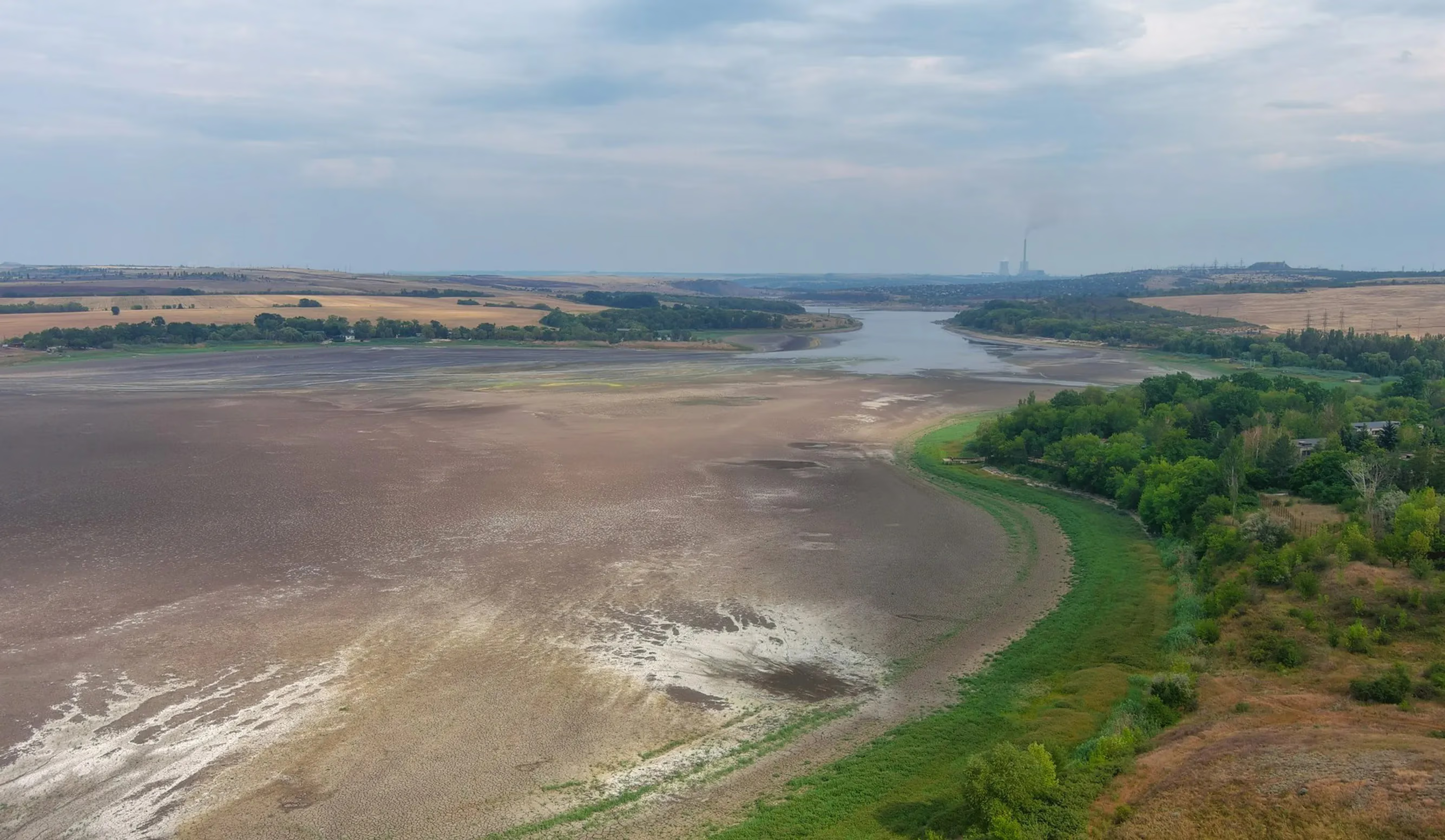
The dried-up Khanzhenkivske reservoir near the village of Nizhnyaya Krynka (part of the self-proclaimed DPR since 2014). July 26, 2025.

A boat on the bed of the shrunken Krynka River. The river flows through the Rostov region and the DPR. August 2, 2025.
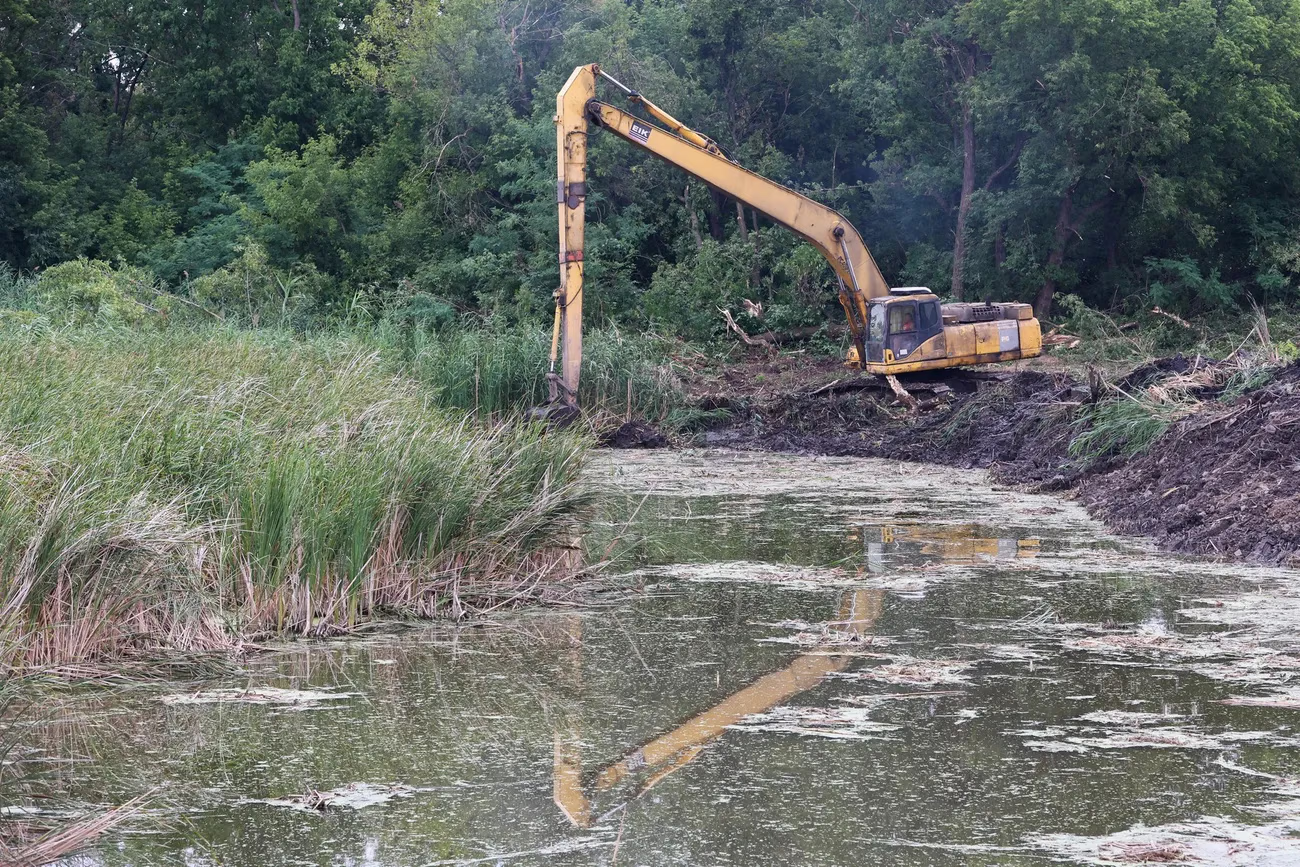
Cleaning the Krynka River. July 26, 2025.
Experts fear that in desperation the authorities may resort to using mine water. But it contains heavy metals and sulfates. Such water is hazardous to health and unfit even for irrigation.
Residents share photos of brown liquid coming from their taps. Even supporters of the war admit that water has become a threat. One “military correspondent” for federal outlets reported developing keratitis caused by amoebas after washing his face. “It’s terrifying to imagine what’s festering in those tanks and jerrycans,” he wrote.
In Donetsk, where people queue for water, the summer of 2025 saw a “Fountain Show.” Ninety tonnes of water were used for the event. The spectacle, according to a local outlet, looked “magical.” For city residents it was only a reminder: water is nearby, but not for them.
